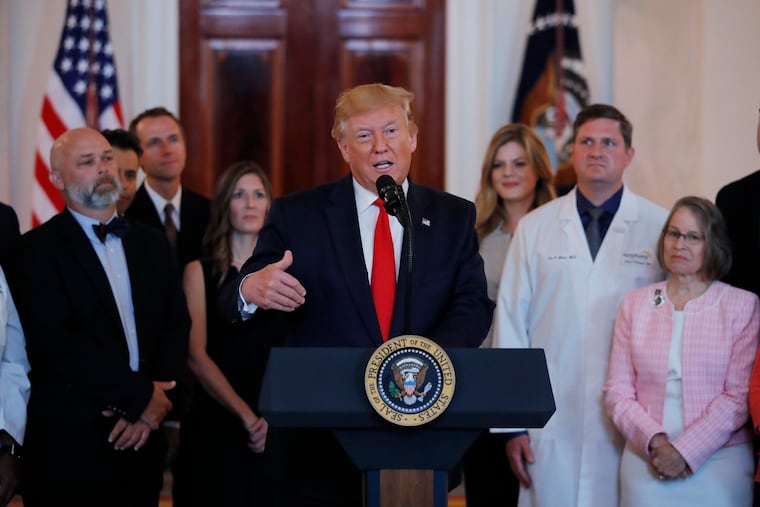Trump issues hospital price transparency executive order. Will it help patients save money?
President Trump is expected to issue on Monday an order calling for hospitals to disclose the rates they negotiate with private insurers.

President Donald Trump issued an executive order on Monday pushing hospitals to publicly disclose the rates they negotiate with insurers for services and procedures.
The order calls on the Department of Health and Human Services to draft new disclosure rules as a way to help patients better understand their health-care costs and — hopefully — save money. Patients would also need to be told in advance of a procedure what their out-of-pocket cost would be, according to the Associated Press.
Prices for even common services vary significantly depending on the provider, the insurer, and a patient’s specific health plan. Negotiated rates are considered proprietary and are often difficult to obtain in advance. As a result, patients often find out how much they owe only after they get a bill.
The order is intended to “put patients in charge and address the drivers of high health-care costs … increasing choice and competition," Health and Human Services Secretary Alex Azar said in a call with reporters, according to the AP.
The insurance industry’s largest trade association, America’s Health Insurance Plans (AHIP), pushed back. AHIP CEO Matt Eyles said in a statement that the association supports the goal of transparency, but that releasing privately negotiated rates could lead hospitals that have agreed to steep discounts to charge more once they see their competitors’ rates.
Disclosing rates will “reduce incentives to offer lower rates, creating a floor — not a ceiling — for the prices that hospitals would be willing to accept,” Eyles said.
Some health economists agree that the move could make it easier for hospitals to collectively raise prices, according to the New York Times.
The order is the most recent effort by the Trump administration to improve price transparency at a time when rising health-care costs are a top financial concern for voters.
Millions of families with employer-sponsored health plans, the most common type of private health insurance, are spending more than 10 percent of their income on health care, as wages remain stagnant.
Rapidly rising drug prices, surprise hospital bills, and significant out-of-pocket costs for even routine care are straining family budgets and often lead to bills being sent to debt collectors when patients can’t pay.
The price families pay is increasingly important, yet it’s often difficult to find out how much services will cost.
One Inquirer reader was puzzled to be billed $339 and $3,484 for two identical echocardiograms performed at the same hospital a month apart. The first had been done by an independent provider based at the hospital, while the second, more expensive, test was done by the hospital.
Another reader, who painstakingly researched the price of a breast MRI and the lowest-price provider in her insurance network, was shocked by a $3,200 bill for a scan her insurer’s price tool had estimated would cost no more than $1,375.
Trump previously ordered pharmaceutical companies to list drug prices in their television commercials. And as of January, hospitals must post online list prices for every service they provide, though few people pay list prices and the data is too dense to be useful for most consumers.
Exactly what hospitals are required to disclose about their private insurer rates or how is still to be determined. The order directs federal agencies to hammer out the details, a process that can take months or years, the AP reported.